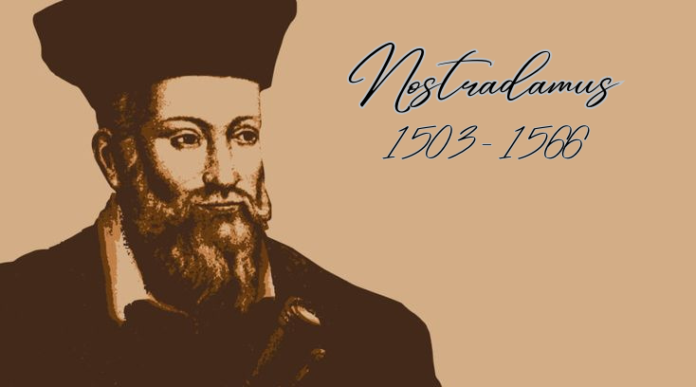In the annals of history, few names shine as brightly as that of Michel de Nostredame, better known as Nostradamus. Born on December 14, 1503, in the quaint town of Saint-Rémy-de-Provence, France, he would go on to become one of the most enigmatic and enduring figures of the Renaissance era. This biography seeks to uncover the life, work, and mystique of the 16th-century prophet who captured the world’s imagination with his cryptic prophecies.
Early Life and Education
Michel de Nostredame came from a family of Jewish converts to Catholicism. His early years were marked by tragedy as he witnessed the ravages of the plague, which claimed the lives of his parents and siblings. This experience would later shape his approach to medicine and prophecy.
Nostredame displayed a prodigious intellect from a young age and was drawn to the study of literature, mathematics, and the natural sciences. He pursued a classical education, attending the University of Avignon and later studying medicine at the University of Montpellier, where he earned a medical degree in 1529.
The Healing Art
After completing his medical studies, Nostradamus embarked on a career as a physician. He was renowned for his holistic approach to medicine, combining his knowledge of traditional medicine with a keen understanding of astrology and the occult. His innovative treatments often led to remarkable recoveries, earning him a reputation as a gifted healer.
The Quest for Knowledge
Nostradamus’ fascination with the mystical and occult grew during his travels throughout Europe. He encountered various esoteric traditions and began to explore the realms of astrology, alchemy, and divination. This period of self-discovery would sow the seeds of his prophetic work.
Prophecies and the Almanacs
In the mid-1550s, Nostradamus began publishing his famous almanacs. These annual publications contained astrological predictions and weather forecasts, catering to a popular readership. However, it was his inclusion of quatrains—four-line verses—containing cryptic prophecies that garnered widespread attention.
Nostradamus’ prophecies covered a wide range of topics, from the fate of nations to natural disasters and the rise and fall of rulers. His verses were often veiled in allegory and symbolism, inviting readers to interpret their meanings.
The Centuries: A Legacy of Prophecy
Nostradamus’ magnum opus, “Les Prophéties” (The Centuries), was published in 1555. This collection of 942 quatrains would become his most famous and enduring work. The Centuries contained predictions spanning centuries into the future, and it remains a subject of fascination and debate to this day.

The Controversy Surrounding Nostradamus
Nostradamus’ prophecies generated both fervent belief and vehement skepticism. Critics accused him of charlatanism, arguing that his predictions were vague and open to interpretation. Supporters, however, contended that his accuracy in foretelling events, such as the rise of Napoleon and Hitler, was uncanny.
Life in Turbulent Times
Nostradamus lived during a tumultuous period in European history. The Renaissance was in full swing, the Protestant Reformation was challenging the Catholic Church’s authority, and wars raged across the continent. Nostradamus’ prophecies often reflected the anxieties and hopes of his time.
The Royal Patronage
Nostradamus’ growing fame brought him to the attention of Catherine de’ Medici, the Queen of France. He was invited to the royal court and became the court physician to King Charles IX. His association with the monarchy added to his prestige but also drew envy and suspicion.
The Final Years
Nostradamus’ later years were marked by personal tragedy, as he lost his wife and children to the plague. Despite these devastating losses, he continued to work on his prophecies and almanacs. His health deteriorated, and he passed away on July 2, 1566, in Salon-de-Provence, France.
The Enduring Legacy
Nostradamus left behind a body of work that continues to captivate and mystify people around the world. His prophecies, interpreted by countless scholars and enthusiasts, have been applied to a myriad of historical events, and many still believe in his ability to foresee the future.
Nostradamus in Popular Culture
Nostradamus’ influence extends beyond the realm of prophecy. He has inspired numerous books, films, and television shows. His name is synonymous with the art of prediction, and his cryptic quatrains have become a staple of fortune-telling and divination.
The Enigma Persists
The enigma of Nostradamus endures because of the tantalizing ambiguity of his prophecies. Did he possess supernatural insight, or was he a skilled observer of human nature and historical trends? The debate continues, and Nostradamus remains an enduring symbol of the human fascination with the unknown.
The Legacy of Nostradamus
Michel de Nostredame, known to the world as Nostradamus, was a multifaceted figure—physician, healer, scholar, and prophet. His life and work reflect the tumultuous times in which he lived and the enduring human desire to glimpse into the future. Whether revered or reviled, Nostradamus’ legacy persists as a testament to the enduring mysteries of the human spirit and the unending quest to unravel the secrets of tomorrow.


